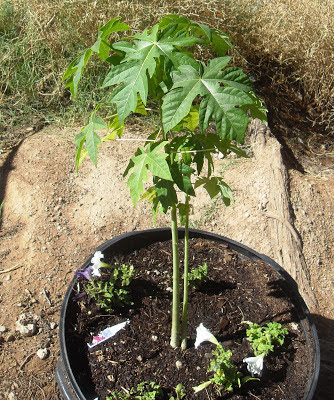Over the last 3 years my sweet potato harvest has been steadily increasing. The first year I harvested almost nothing. The second year I harvested a lot more. This year I harvested more orange sweet potatoes above ground then the quantity I harvested last year – below ground!
| Above Ground Sweet Potatoes |
| Some More Sweet Potatoes emerging from the ground |
I had purchased the original “seed” potato for my second year of planting from a local farm, Sunzona, through a Whole Foods Market. I contacted Sunzona farms to find out the name of the variety, but they never got back to me. After speaking with several of the produce employees at the Whole Foods Market, one of them explained to me that it was some kind of Garnett. After searching online for a while and comparing all the pictures and vine descriptions I still couldn’t figure out what variety I have. Perhaps it's Beauregard.
The largest of these tubers, weighing in at almost 5 pounds, was (with no small effort) cut up and diced, then split between two casserole dishes of candied yams for our last Thanksgiving feast. Yes – I know sweet potatoes are not yams, but that is the name of the oven-baked marshmallow-topped dish I serve my family each Thanksgiving.
| Large Orange Sweet Potato for Thanksgiving Dinner |
| Orange Sweet Potatoes chopped up for Thanksgiving Dinner |
From my experience, I would not grow sweet potatoes from market bought potatoes unless I knew that they were grown locally.
Here are a few of the many online companies that you can get Sweet Potato Slips from in the U.S.:
- Brown’s Omaha
















